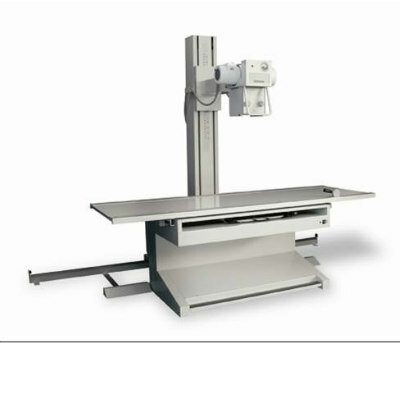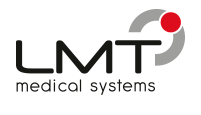Diagnostic Ultrasound Bra Detects Breast Cancer Earlier
|
By MedImaging International staff writers Posted on 31 Jul 2023 |

The survival rate for breast cancer detected at the earliest stages is nearly 100%. However, the survival rate decreases to around 25% when tumors are identified at later stages. Tumors that form between regular mammogram screenings, known as interval cancers, account for 20 to 30% of all breast cancer cases and also tend to be more aggressive. Researchers aiming to increase the overall survival rate for breast cancer patients have developed a wearable ultrasound device that could detect tumors in their early stages. This tool could be particularly beneficial for patients at a high risk of developing breast cancer between routine mammograms.
Researchers from the Massachusetts Institute of Technology (MIT, Cambridge, MA, USA) have developed a flexible patch that can be attached to a bra. This patch allows the wearer to maneuver an ultrasound tracker to image breast tissue from different angles. In the new study, researchers demonstrated that they were able to obtain ultrasound images having comparable resolution to that of ultrasound probes used in medical imaging centers. Initially, the team drafted a rough sketch of a diagnostic device that could be integrated into a bra for more frequent screening of individuals at high risk of breast cancer. The diagnostic bra concept became a reality when the team finally developed a miniaturized ultrasound scanner that allowed users to perform imaging at their convenience. This scanner is founded on the same ultrasound technology used in medical imaging centers but includes a novel piezoelectric material that enabled miniaturization of the scanner.
The device was made wearable by designing a flexible, 3D-printed patch featuring honeycomb-like openings. Using magnets, the patch can be fastened to a bra that has specific openings for the ultrasound scanner to make skin contact. The ultrasound scanner is placed inside a small tracker that can be moved to six different positions for complete breast imaging. The scanner can also be rotated to capture images from various angles and does not require specialized knowledge to be operated. The wearable ultrasound patch can be reused, and the researchers envisage its potential for at-home use by individuals at high risk for breast cancer, benefiting from frequent screening. It could also assist in diagnosing cancer in individuals who lack regular access to screening. At present, the researchers need to connect their scanner to a typical ultrasound machine used in imaging centers to view the ultrasound images. However, they are working on a miniaturized version of the imaging system that would be roughly the size of a smartphone.
The team tested their device on a 71-year-old woman with a history of breast cysts. The researchers successfully detected the cysts, as small as 0.3 centimeters in diameter—comparable to early-stage tumors—using the new device. The device demonstrated resolution similar to that of traditional ultrasound, imaging tissue up to 8 centimeters deep. The team hopes to establish a process where data gathered from a subject can be analyzed by artificial intelligence to observe image changes over time, potentially providing more accurate diagnostics than a radiologist comparing images taken years apart. They also intend to investigate the potential for adapting the ultrasound technology to scan other body parts.
“We changed the form factor of the ultrasound technology so that it can be used in your home. It’s portable and easy to use, and provides real-time, user-friendly monitoring of breast tissue,” said Canan Dagdeviren, an associate professor in MIT’s Media Lab and the senior author of the study. “My goal is to target the people who are most likely to develop interval cancer. With more frequent screening, our goal to increase the survival rate to up to 98%.”
“This technology provides a fundamental capability in the detection and early diagnosis of breast cancer, which is key to a positive outcome,” said Anantha Chandrakasan, one of the authors of the study. “This work will significantly advance ultrasound research and medical device designs, leveraging advances in materials, low-power circuits, AI algorithms, and biomedical systems.”
Related Links:
MIT
Latest Ultrasound News
- Deep Learning Advances Super-Resolution Ultrasound Imaging
- Novel Ultrasound-Launched Targeted Nanoparticle Eliminates Biofilm and Bacterial Infection
- AI-Guided Ultrasound System Enables Rapid Assessments of DVT
- Focused Ultrasound Technique Gets Quality Assurance Protocol
- AI-Guided Handheld Ultrasound System Helps Capture Diagnostic-Quality Cardiac Images
- Non-Invasive Ultrasound Imaging Device Diagnoses Risk of Chronic Kidney Disease
- Wearable Ultrasound Platform Paves Way for 24/7 Blood Pressure Monitoring On the Wrist
- Diagnostic Ultrasound Enhancing Agent to Improve Image Quality in Pediatric Heart Patients
- AI Detects COVID-19 in Lung Ultrasound Images
- New Ultrasound Technology to Revolutionize Respiratory Disease Diagnoses
- Dynamic Contrast-Enhanced Ultrasound Highly Useful For Interventions
- Ultrasensitive Broadband Transparent Ultrasound Transducer Enhances Medical Diagnosis
- Artificial Intelligence Detects Heart Defects in Newborns from Ultrasound Images
- Ultrasound Imaging Technology Allows Doctors to Watch Spinal Cord Activity during Surgery

- Shape-Shifting Ultrasound Stickers Detect Post-Surgical Complications
- Non-Invasive Ultrasound Technique Helps Identify Life-Changing Complications after Neck Surgery
Channels
Radiography
view channel
Novel Breast Imaging System Proves As Effective As Mammography
Breast cancer remains the most frequently diagnosed cancer among women. It is projected that one in eight women will be diagnosed with breast cancer during her lifetime, and one in 42 women who turn 50... Read more
AI Assistance Improves Breast-Cancer Screening by Reducing False Positives
Radiologists typically detect one case of cancer for every 200 mammograms reviewed. However, these evaluations often result in false positives, leading to unnecessary patient recalls for additional testing,... Read moreMRI
view channel
PET/MRI Improves Diagnostic Accuracy for Prostate Cancer Patients
The Prostate Imaging Reporting and Data System (PI-RADS) is a five-point scale to assess potential prostate cancer in MR images. PI-RADS category 3 which offers an unclear suggestion of clinically significant... Read more
Next Generation MR-Guided Focused Ultrasound Ushers In Future of Incisionless Neurosurgery
Essential tremor, often called familial, idiopathic, or benign tremor, leads to uncontrollable shaking that significantly affects a person’s life. When traditional medications do not alleviate symptoms,... Read more
Two-Part MRI Scan Detects Prostate Cancer More Quickly without Compromising Diagnostic Quality
Prostate cancer ranks as the most prevalent cancer among men. Over the last decade, the introduction of MRI scans has significantly transformed the diagnosis process, marking the most substantial advancement... Read moreNuclear Medicine
view channel
New SPECT/CT Technique Could Change Imaging Practices and Increase Patient Access
The development of lead-212 (212Pb)-PSMA–based targeted alpha therapy (TAT) is garnering significant interest in treating patients with metastatic castration-resistant prostate cancer. The imaging of 212Pb,... Read moreNew Radiotheranostic System Detects and Treats Ovarian Cancer Noninvasively
Ovarian cancer is the most lethal gynecological cancer, with less than a 30% five-year survival rate for those diagnosed in late stages. Despite surgery and platinum-based chemotherapy being the standard... Read more
AI System Automatically and Reliably Detects Cardiac Amyloidosis Using Scintigraphy Imaging
Cardiac amyloidosis, a condition characterized by the buildup of abnormal protein deposits (amyloids) in the heart muscle, severely affects heart function and can lead to heart failure or death without... Read moreGeneral/Advanced Imaging
view channel
New AI Method Captures Uncertainty in Medical Images
In the field of biomedicine, segmentation is the process of annotating pixels from an important structure in medical images, such as organs or cells. Artificial Intelligence (AI) models are utilized to... Read more.jpg)
CT Coronary Angiography Reduces Need for Invasive Tests to Diagnose Coronary Artery Disease
Coronary artery disease (CAD), one of the leading causes of death worldwide, involves the narrowing of coronary arteries due to atherosclerosis, resulting in insufficient blood flow to the heart muscle.... Read more
Novel Blood Test Could Reduce Need for PET Imaging of Patients with Alzheimer’s
Alzheimer's disease (AD), a condition marked by cognitive decline and the presence of beta-amyloid (Aβ) plaques and neurofibrillary tangles in the brain, poses diagnostic challenges. Amyloid positron emission... Read more.jpg)
CT-Based Deep Learning Algorithm Accurately Differentiates Benign From Malignant Vertebral Fractures
The rise in the aging population is expected to result in a corresponding increase in the prevalence of vertebral fractures which can cause back pain or neurologic compromise, leading to impaired function... Read moreImaging IT
view channel
New Google Cloud Medical Imaging Suite Makes Imaging Healthcare Data More Accessible
Medical imaging is a critical tool used to diagnose patients, and there are billions of medical images scanned globally each year. Imaging data accounts for about 90% of all healthcare data1 and, until... Read more
Global AI in Medical Diagnostics Market to Be Driven by Demand for Image Recognition in Radiology
The global artificial intelligence (AI) in medical diagnostics market is expanding with early disease detection being one of its key applications and image recognition becoming a compelling consumer proposition... Read moreIndustry News
view channel
Bayer and Google Partner on New AI Product for Radiologists
Medical imaging data comprises around 90% of all healthcare data, and it is a highly complex and rich clinical data modality and serves as a vital tool for diagnosing patients. Each year, billions of medical... Read more



















